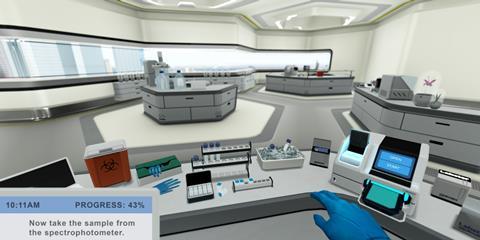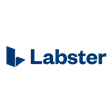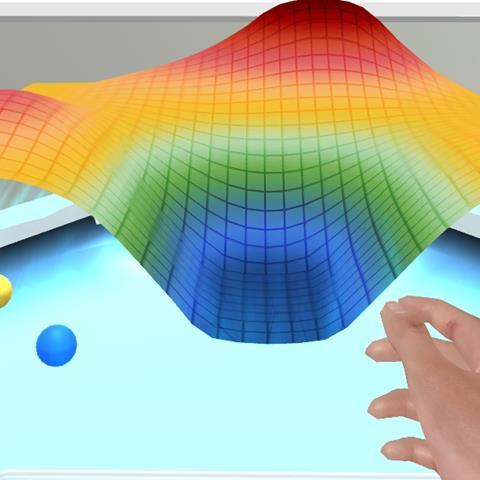Using her experience as a pharmacology lecturer, Sarah Jayne Boulton now develops lab and experiment simulations that equip students with the skills and confidence they need for the real thing
After designing, building, and testing virtual lab simulations for nearly two years with Labster, I’ve learned one thing: it takes the same well-worn pedagogical tools to create solid virtual learning resources as it does to create good in-person learning experiences. Before I worked for Labster, my PhD studies (sponsored by the Royal Society of Chemistry) helped me to uncover a passion for teaching and led me to a pharmacology teaching fellowship. Although I now employ the same, cherished hand-me-down communication strategies and sharp-honed instructional techniques I used as a lecturer, what truly shaped my approach in the simulation development laboratory were the days I spent working with students at the bench. Around April time, I would have been cramming for back-to-back weeks of flipped classroom lectures, prepping seminar Q&A sessions, and repeating the same three-hour practical four times back to back.
Want to try it for yourself?
Labster are offering readers of Chemistry World the opportunity to experience their simulated lab environments.
I recall my early-career anxieties as a lecturer every time I open the template slide deck I use to plan new simulations. As I contemplated my most recent simulation topic, spectrophotometry, my mind was ablaze with first-year scientific skills tests, greasy fingerprints on optically transparent plastic, and instruments that simply would not stabilise. When I taught biochemistry, just knowing that most students saw the spec as another black box instrument that spat out data frustrated the kinetics nerd in me. So did the realisation that I would soon feed the incinerator an ocean of mindlessly generated waste plastic. Back then, the primary goal was to introduce the spectrophotometry techniques safely whilst helping my students get to know the instrument. Recently, my goal as the developer of the virtual lab on spectrophotometry was the same.
Formulating a chemistry simulation
If it was feasible, I’d give my students the experience that made my own spectrophotometry lightbulb ping on: fixing the one that broke at a critical PhD moment. Stripping down and building your kit is such a personal experience and one that joins the theoretical dots in a way nothing else can. Sadly, though justifiably, my head of school wouldn’t foot the bill for such high interference teaching activities over a 380 student cohort. With cost and danger removed from the equation in my virtual lab, I was presented with the opportunity to do just that.
we quickly found synergy between level-based gaming theory and […] inquiry-based learning
Development of a simulation to permit students to explore the inner workings of a spec began with a collaboration between myself and our artists, coders, game designers and quality assurance professionals. My coding colleagues brought their mechanical empathy with the Labster platform to the table and were the perfect partners to translate high-level chemistry teaching needs and objectives into a detailed student interaction flow of success and failure. Our dedicated artists found creative and stimulating ways to represent the instrument’s internal functionality while remaining sympathetic to scientific accuracy.
Gamification and inquiry-based learning
With years of games industry knowledge in the team, we quickly found synergy between level-based gaming theory and the proposed pedagogic core of inquiry-based learning that would form the nucleus of the simulation experience. The constructivist teaching approach of building in complexity over time found a complement in the difficulty curves game designers apply to promote user engagement through challenges that are just hard enough. We combined these principles to crack spectrophotometry learning goals into digestible, well-paced, successively complex activities. We rounded off the experience with the capstone, boss-level challenge of correctly measuring and interpreting a sample.

Learning outcomes and cognitive load
Conversations with educators highlighted student cognitive load as a major challenge for first-year chemistry teaching in higher education. Until the student is familiar with the laboratory environment and the most common pieces of apparatus, entering the laboratory for practical training can be a daunting experience. There’s a lot to keep in mind, to bring, to do, to process on a tactile and sensory level as you try to figure out what that weird smell is. As an educator, I want people to arrive at the lab prepared, motivated and ready to get involved. Anything I can do to reduce anxiety, apprehension or load is a win. I feel that the spectrophotometry simulation I helped create could have helped my past students get into the learning mindset. We launched the spectrophotometry simulation early in January 2021 and so far feedback has been very positive.
Labster is likely to reduce cognitive load for students, allowing them to focus on performing safely and accurately in the wet lab
Many educators implement Labster as a prerequisite for wet lab sessions to familiarise students with the related conceptual knowledge and technical procedures. A 2014 study indicated that 86% of students polled found completing a simulation more interesting than more frequently encountered exercises.1 Labster presents an alternative or supplementary approach to preparing students for manual skill development. Familiarity with processes and equipment recognition gained through Labster is likely to reduce cognitive load for students, allowing them to focus on performing safely and accurately in the wet lab. Indeed, more recent studies have highlighted increased intrinsic motivation and self-efficacy in students that used Labster as part of their curriculum.2
Test it for yourself
When I play the spectrophotometry simulation, it triggers so many ideas for additional content and supplementary materials. However, it’s not my voice that should be guiding the development of new virtual lab resources – it’s yours. You’re welcome to drop me an email if you’d like to try out a simulation for free, or just to talk about what resources you’d like to see us create in the future to support your teaching. I’d love to share a brew with you and hear your feedback, from one chemistry educator to another.
Sign up to receive The Labster Report
Discover new ways of teaching and learning. Once a month.
The Labster Report is a subscription email service provided by Labster. By subscribing to this email you are providing personal information to Labster under the terms of Labster's privacy policy.
Since its launch up to the time of writing, over 3 million students worldwide have used Labster as part of their studies. We’re proud to have helped hundreds of educators pivot their teaching methods as we worked through a global pandemic. Looking forward to a post-Covid world, preparing Stem graduates for increased globalisation means embedding the basics as solidly as possible and helping them become comfortable with digital tools and training. I’d like to think that virtual labs can play a role in supporting both hard and soft skills development in the next generation of scientists.
References
1. MT Bonde et al, Nat. Biotech., 2014, 32: 694 (DOI: https://doi.org/10.1038/nbt.2955)
2. G Makransky et al, J Comput Assist Learn 2019, 35: 691 (DOI: https://doi.org/10.1111/jcal.12375)
















No comments yet